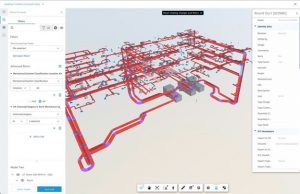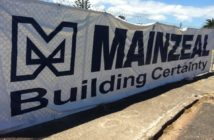Autodesk has released its Correspondence tool in New Zealand, offering support for project teams to make everyday decisions earlier. It needs no technical expertise or specialist applications.

By focusing on constructability in the design phase, project teams can avoid expensive rework down the
line. Correspondence is the first in a spate of Autodesk releases to improve project transparency.
In construction, about 70 percent of rework can be traced back to the disconnect between design and
what’s constructible. The further along a construction project is, the more difficult and costly changes
become.
And when most of a project’s value is created in the beginning stages when mistakes are easier to fix,
the importance of getting it right early is greater than ever—making consistent communication crucial.
“It’s critical for project teams to be able to trust that their documents are construction-ready, recent,
and accurate. Irrelevant and hard-to-access information leads to confusion, disputes, and mistakes,”
says Sumit Oberoi, Industry Strategy Manager at Autodesk Construction.
“Autodesk’s new capabilities, including the Correspondence tool, will provide holistic and tactical
support to help teams prioritise tasks, assess tradeoffs, build on intuition, and validate assumptions so
choices made are more informed,” he says.
The company developed the Correspondence module in collaboration with its key construction
customers and partners.
Early and often
Correspondence centralises all project communication created or collected in a single source of truth. It
provides project leaders with open-ended, searchable, and manageable communications
stored within Autodesk Construction Cloud (ACC)
This makes it easier to communicate and uncover key decisions. Project teams can create and organise
all correspondence from ACC and import threads directly from Outlook or Gmail.
“The Correspondence tool is incredibly positive,” said Chris Rossetto, VDC Manager at Australia-wide
construction leader Hansen Yuncken. “It is potentially a massive game changer for us and the industry.
We currently feel stuck in the way we manage correspondence and store project information on
rudimentary platforms that are considered to be the industry standard for clients.
This could eventually bring us a step closer to running a single-platform ‘common data environment’
according to Rosetto.
Workflows and Sheets
Because design models can be overwhelming for field teams, Autodesk also is launching Model Quality
Workflows, a collection of releases that supports the translation of design models into construction-
ready models.
A recent release enables anyone on the project team, from the BIM manager to the project engineer, to
curate custom views for teams onsite that are hyper-relevant and easy to digest. By providing teams
with access to well-defined models early and often, onsite teams have what they need to improve
installation productivity.
Autodesk is also releasing the Sheets Collection, which helps teams more clearly organise sheets and
quickly access relevant drawings. Those who oversee construction projects with multiple buildings will
be able to store and manage drawings with identical names, streamlining the document management
workflow, and centralising important construction data in a single location. This feature removes the
cumbersome need to create and own multiple projects or prefix sheet names to get the job done.
Sheets are accessible to teams in the office and field for larger multi-building projects.
Bridge for close RFIs and Embodied Carbon
In the AEC industry, time is often wasted switching between different applications to perform specific
actions. Many firms keep information siloed in disconnected systems, inadvertently causing delays
and negatively impacting decision-making. With ACC, Autodesk aims to help customers maintain
workflows within a single application and a shared system of record.
Autodesk will soon be releasing Bridge for Closed RFIs, allowing users to share closed RFIs across
projects or accounts using Bridge, providing all stakeholders with the answers they need to make
confident decisions. This capability broadens the types of information that can be shared across
organisations and allows teams to retain critical information throughout the project lifecycle and after
the job ends.
Another recent example of how Autodesk is dedicated to giving construction professionals the tools
they need to make smarter decisions is this summer’s release of the Embodied Carbon in Construction
Calculator (EC3) integration for ACC. The EC3 integration enables users to stay in their system of record
to perform carbon emission calculations and empowers teams to make more sustainable choices when
selecting materials for a project.
This reduced technology management across the board improves both productivity and the ability to
make informed decisions quickly with access to the right information.
Individual productivity, project transparency
Manual systems and a disconnect between 2D and 3D workflows often lead to poor decision-making,
which can impact schedule and budget. With today’s releases, a major focus is increasing project
transparency and cutting through the noise to bring construction teams only the most relevant
information they need for the task at hand. Expanding individual capacity by providing simplified and
relevant information at every point of the project leads to greater productivity overall.
With ACC’s latest announcements, Autodesk is striving to empower more informed decision-making,
bringing accurate and up-to-date project data directly to construction teams’ fingertips when they need
it and where they need it so their customers can continue to deliver high quality projects on-time and
on-budget.
About Autodesk
Autodesk technology spans architecture, engineering, construction, product design, manufacturing,
media and entertainment, empowering innovators to solve challenges big and small. Autodesk software
helps customers to design and make a better world for all. For more information visit autodesk.com or
follow @autodesk.









